#amateur folklorist
Explore tagged Tumblr posts
Text
TL;DR - anyone here like research essays? On Specific Fuckin Shit?
Okay so I was, earlier, putting my foot down and looking into the nitty gritty of how to format artwork (specifically in my case, traditional pieces) for print - which I have been putting off for years, and which is increasingly pertinent since as it stands it looks like drawing commissions and me do NOT get along well.
Aaaand then the wee devil on my shoulder told me that hey, hey, wouldn't it be more fun and gratifying for one of my specific old faves, to redraw it instead???
So basically now I'm fighting for my life in the historical clothing rabbit hole.
AND now wondering whether anyone would be interested hearing like, mini-essays slash rambling drabbles about what I turn up? God fucking knows that the content mill doesn't wait for man nor bird, and frankly I have my best ideas from when I see something and run around mental looking for More Info.
This would either be in like, common or garden tumblr post text format. Orrrrr... well we do love a good video essay, and apparently I have a "nice" "voice".
(Today, for example, we have - haunted locations in Scotland, ghosts of Edinburgh and Stirling castles, Lady Janet Douglas of Glamis (pronounced Glams because anglicizing Celtic languages works so so well all of the time), and courtly and medieval dress of Scotland)
#artblr#historical clothing#research essays#scottish history#fashion history#dress history#folklore#scottish folklore#british folklore#(hiding this tag from my mum)#(she's oan that SCOTTISH NOT BRITISH wagon)#(which to be fair so am I but we must commit to the bit)#ghost lore#folklore studies#amateur folklorist#man alive how to tag this for visibility#video essay
2 notes
·
View notes
Text
ah yes
Destiel
like yes it is a ship
but holy shit yall are sleeping on the DEEP, ARCHETYPAL AND FOLKLORICALLY SIGNIFICANT aspects that this ship contains
okay I get it they kiss they hold hands they have hot gay sex or whatever (I'm ace idfk)
can we please talk about the fact that Destiel follows the mythological structure of a Sky God/Earth Goddess love story narrative. can we. can we fucking talk about this because it needs to be talked about
Finding something cool and thematically rich and wanting to see what other people think abt it and all I find is shipping

#thats NOT EVEN THE ONLY FOLKLORIC/MYTHIC ARCHETYPE THEY HIT#as an amateur folklorist. as an archeology major. as a medieval studies minor. DESTIEL IS SO!!!!#destiel gives me brainrot AS AN ACADEMIC#looking over at some random cw show and these pretty men are creating a new pagan pantheon like okay then.
34K notes
·
View notes
Text
Wait, what if I replace troglodytes and kobolds (in mine, related like goblins and hobgoblins are) with morlocks and derros?
About the only downside I can see to this is that “kobolds” have been almost completely replaced, in the popular imagination, by the little dragon dudes. Never mind that they’re really just German tommyknockers. In OD&D, BECMI, and the first two editions of Advanced Dungeons & Dragons, kobolds were (along with orcs in fact) considered a “goblinoid” race, rather than their own independent type of humanoid.
Huh. I was worrying about a thing in my story set in my game-world, where there’s some stuff in the language the kobolds use—Undercommon, but in my version it’s spoken mainly by lizardfolk and serpentfolk (Pathfinder’s non-copyright infringing yuan-ti, and even more openly a tribute to the Serpent Men of Valusia). But it still could be, I can just have the morlocks, who presumably already deal a lot with scaly horrors from beneath the earth, use it while on raids so unmutated humans (whose language is related to theirs, in the main setting) won’t understand them.
So, yeah, definitely gonna replace kobolds and troglodytes with morlocks and small morlocks, i.e. derros. (Also gonna have mine be blind, like grimlocks in D&D proper. And the Falmer.)
#fantasy writing#fantasy worldbuilding#honestly the draconic kobold is almost as irritating to me as an amateur folklorist as the bestial firbolg#at least in warcraft they spelled it FUR not FIR
0 notes
Text
Another amateur folklorist moment here:
84 notes
·
View notes
Text
More Nevarran cultural/anthropological ramblings:
A/N: this is all for fun I just love pondering about how world building in fantasy can highlight some really beautiful things about our culture in the real world :3
As an amateur folklorist, I have been rotating Nevarran traditions in my brain like a rotisserie chicken. In the process of letting it cook, I stumbled upon another possible real-world connection. This one involves the design and approach to the armor of the Mourn Watch—More below the cut:
I got this idea from some of the helmet designs for the Mourn Watch faction. My personal favorite helmet is the “smiling visage”. In the flavor text, it states ‘The smiling expression eases passing souls as they cross into the afterlife’.

This got me thinking about masked traditions in regard to death rituals. In my last post, I made a loose connection of Nevarran traditions to be akin to southern European/Balkan culture. I think I want to expand on that theory by presenting the Bulgarian tradition of Kukeri.
During New Years, it is common for many regions of Bulgaria to participate in a costumed tradition. People of all ages don large suits made of leather and long-haired fur. They also make elaborate masks that are monster-like and a little scary. On top of their garb, large bells hang off their body. Their tolls are meant to scare away nefarious spirits. When these people dress up, they become kukeri, guides of good spirits, and banes to evil ones.

A lot of the Nevarran armor seems to have some sort of “masking” or costume-like structure that reminds me of the kukeri tradition, and other masked traditions like it. Much of the armor changes Rook’s body/head shape that they look more akin to the dead, or a spirit—similar to how the Kukeri suits change the form of the person wearing them.
The flavor text for “smiling visage” suggests that spirit guidance is an important aspect of the job of a Mourn Watcher. They are not only ambassadors between mortals and spirits, but they are also apt in fostering relations in the other direction: spirits to mortals.
I know I talked a lot about Bulgaria specifically in this post, but masked traditions from all over the world have a similar intimacy with “the other side”. When spirit work is involved within a ritual, it seems almost customary to approach it with a mask. It is not armor for the body, but armor for the soul. It allows one to leave the body of the human behind, and embrace the wholeness of a spirit.
#dragon age#datv#dragon age the veilguard#mourn watch rook#mourn watch#nevarra#Nevarran#worldbuilding#this is truly what I think about in most of my free time#I got that anthropology autism#having a full time job sux bc i just wanna write dragon age fanfic but i’m stuck at work
22 notes
·
View notes
Text
Ok ik this is mean and irrelevant but I’m curious: People with running Supernatural postcanon AUs, via fic, art, in their heads etc:
Please rb to spread, as an amateur folklorist and historian I’m kind of desperate to get a snapshot of whatever transition is taking place.
#sorry if this seems in poor taste. just doing my actual duty as a folklorist for once#unironically this is a big part of my academia#wild to document the impact of a devastating political shift on working-class folk myth#will also be posting a weeklong version in order to gather both snapshot and longer-effect data#IN REAL TIME#destiel#supernatural#nov 5th#november 5th#superhell#us politics#us elections#Donald Trump#Kamala Harris#Spn#academia#studyblr
21 notes
·
View notes
Text
Cinderella Illustrations by Roberto Innocenti
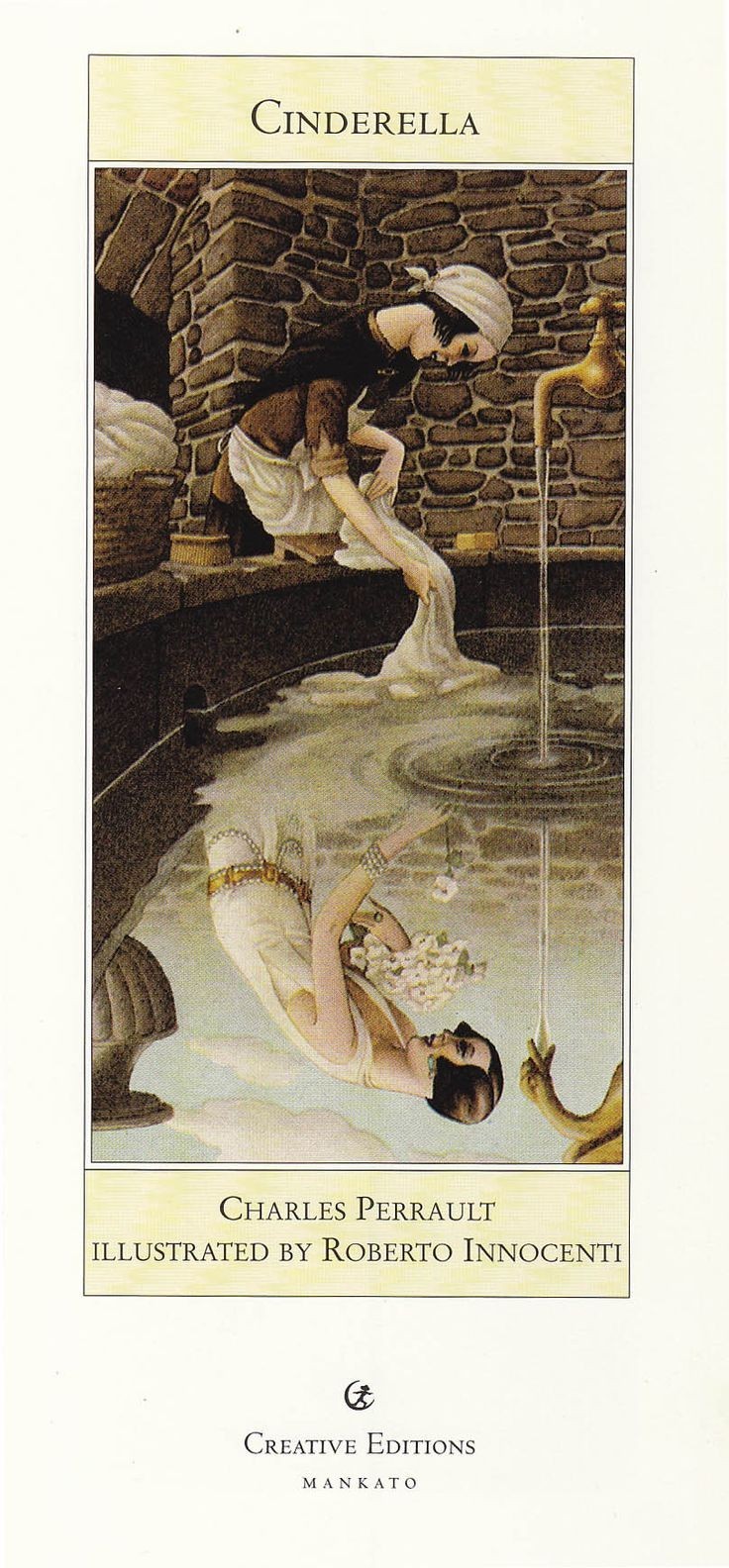

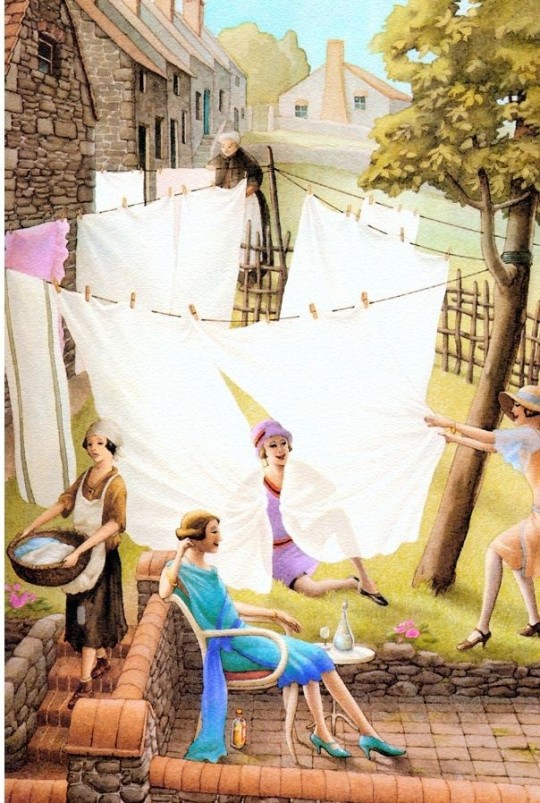
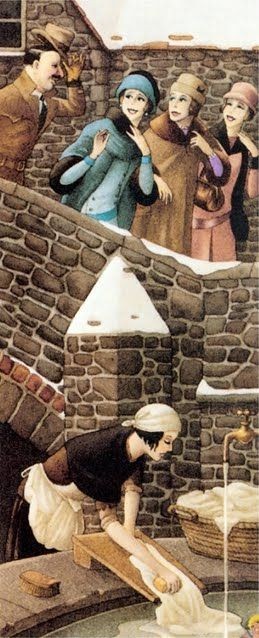
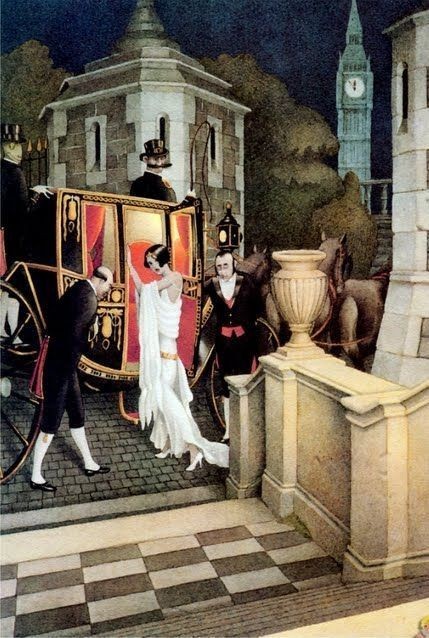
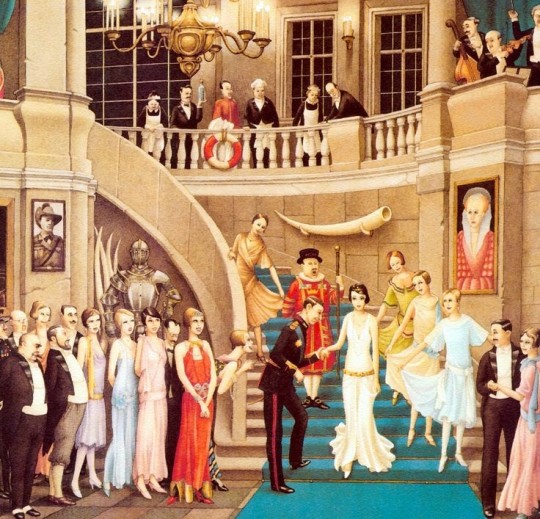
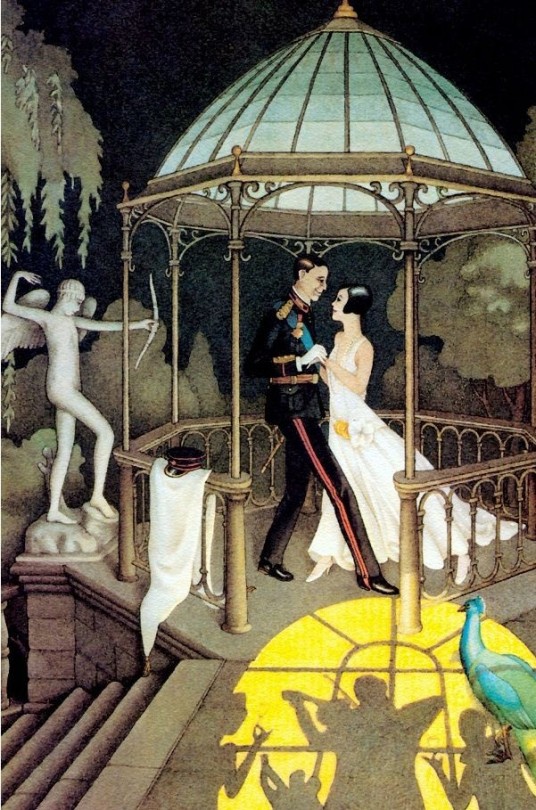


@ariel-seagull-wings @princesssarisa @natache @angelixgutz @the-blue-fairie @adarkrainbow @the-amateur-folklorist
91 notes
·
View notes
Text
Anthropologist Zelia Nuttall transformed the way we think of ancient Mesoamerica
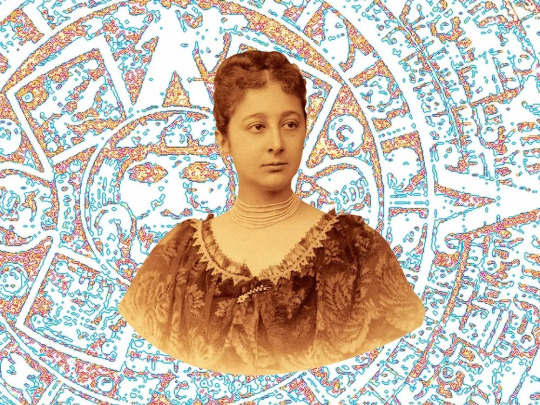
An illustration of the Aztec calendar stone surrounds a young portrait of anthropologist Zelia Nuttall. “Mrs. Nuttall’s investigations of the Mexican calendar appear to furnish for the first time a satisfactory key,” wrote one leading scholar.Peabody Museum of Archaeology and Ethnology, Harvard University
By Merilee Grindle
Author, In the Shadow of Quetzalcoatl: Zelia Nuttall and the Search for Mexico’s Ancient Civilizations
On a bright day early in 1885, Zelia Nuttall was strolling around the ancient ruins of Teotihuacán, the enormous ceremonial site north of Mexico City. Not yet 30, Zelia had a deep interest in the history of Mexico, and now, with her marriage in ruins and her future uncertain, she was on a trip with her mother, Magdalena; her brother George; and her 3-year-old daughter, Nadine, to distract her from her worries.
The site, which covered eight square miles, had once been home to the predecessors of the Aztecs. It included about 2,000 dwellings along with temples, plazas and pyramids where they charted the stars and made offerings to the sun and moon. As Zelia admired the impressive buildings, some shrouded in dirt and vegetation, she reached down and collected a few pieces of pottery from the dusty soil. They were plentiful and easy to find with a few brushes of her hand.
The moment she picked up those artifacts would prove to be pivotal in the life and long career of this trailblazing anthropologist. Over the next 50 years, Zelia’s careful study of artifacts would challenge the way people thought of Mesoamerican history. She was the first to decode the Aztec calendar and identify the purposes of ancient adornments and weapons. She untangled the organization of commercial networks and transcribed ancient songs. She found clues about the ancient Americas all over the world: Once, deep in the stacks of the British Museum, she found an Indigenous pictorial history that predated the Spanish conquest; skilled at interpreting Aztec drawings and symbols, and having taught herself Nahuatl, the language of the Aztecs and their predecessors, she was the first to transcribe and translate this and other ancient manuscripts.
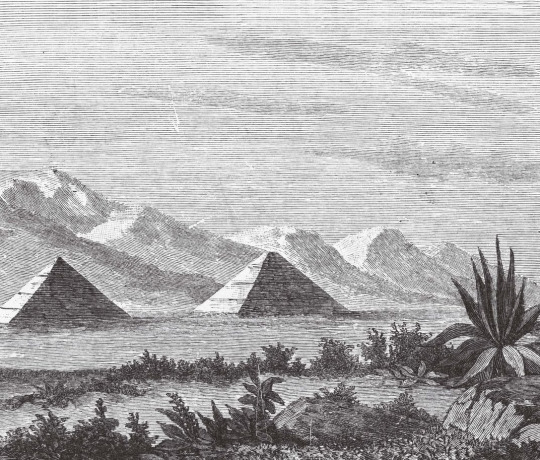
A 19th-century engraving of the pyramids of Teotihuacan. The Pyramid of the Sun was restored in 1910, on the centennial of the Mexican War of Independence. Bridgeman Images
She also served as a bridge between the United States and Mexico, living in both countries and working with leading national institutions in each. At a time when many scholars spun elaborate and unfounded theories based on 19th-century views of race, Zelia looked at the evidence and made concrete connections based on scientific observations. By the time she died, in 1933, she had published three books and more than 75 articles.
Yet during her lifetime, she was sometimes called an antiquarian, a folklorist or a “lady scientist.” When she died, scholarly journals and some newspapers ran notices and obituaries. After that, she largely passed from the public’s eye.
Today, anthropologists often have specialized expertise. But in the 19th century, anthropology was not yet a discipline with its own paradigms, methods and boundaries. Most of its practitioners were self-taught or served as apprentices to a handful of recognized experts. Many such “amateurs” made important contributions to the field. And many of them were women.
She was born in 1857 to a wealthy family in San Francisco, then a fast-growing city of about 50,000 people. Near the shore, ships mired in mud—many abandoned by crews eager to make their fortunes in the gold fields—served as hostels to a restless, sometimes violent and mostly male population. Other adventurers found uncertain homes in hastily built hotels and rooming houses. But the city was also an exciting international settlement. Ships arrived daily from across the Pacific, Panama and the east via Cape Horn.
Her well-appointed household stood apart from the city’s wilder quarters, but the people who lived there reflected San Francisco’s international character. Her mother, Magdalena Parrott Nuttall, herself the daughter of an American businessman and a Mexican woman, spoke Spanish, and her grandfather, who lived nearby, employed a French lady’s maid; a nursemaid from New York; a chambermaid, laundress, housekeeper, coachman and groom from Ireland; a steward from Switzerland; a cook and additional servants from France; and nine day laborers from China.
When Zelia was 8, her family left San Francisco for Europe. Along with her older brother, Juanito, and her younger siblings Carmelita and George, Zelia and her parents set off for Ireland, her father’s native land. Over the course of 11 years, the Nuttalls made their way to London, Paris, the South of France, Germany, Italy and Switzerland. Throughout that time, Zelia was educated largely by governesses and tutors, with some formal schooling in Dresden and London. But her time overseas shaped her interest in ancient history and expanded her language skills, as she added French, German and Italian to her fluent Spanish. All of this expansion thrilled her mind, but it also made her feel increasingly out of step with the expectations for young women of her age. “My ideas and opinions form themselves I don’t know how, and I sometimes am astonished at the determined ideas I have!” she wrote in a November 1875 letter.
She took refuge in singing and tried to be pleased with the few social events she attended. Photos from the time show Zelia as an attractive young woman with large, dark eyes, arched eyebrows and stylishly arranged hair. Nevertheless, she was unhappy. “I was infinitely disgusted with some of the idiotic specimens of mankind I danced with,” she wrote in an 1876 letter after a party.
The Nuttalls returned to San Francisco in 1876, when she was nearly 20. Two years later, she met a young French anthropologist, Alphonse Pinart, already celebrated in his mid-20s as an explorer and linguist. He had been to Alaska, Arizona, Canada, Maine, Russia and the South Sea Islands. Pinart may have led the family to understand that he was wealthy. In fact, he was almost penniless, having already spent his significant inheritance.
They were married at the Nuttall home on May 10, 1880. During the next year and a half, the couple traveled to Paris, Madrid, Barcelona, Puerto Rico, Cuba, the Dominican Republic and Mexico. Pinart introduced Zelia to a burgeoning academic literature in ethnology and archaeology, and she began to understand the theories of linguistics. She found 16th-century Spanish hardly a challenge as she consulted annotated codices—pictorial documents that traced pre-Columbian genealogies and conquests in Mesoamerica. While Pinart dashed from project to project and roamed widely among countries, tribes and languages, Zelia began to demonstrate an intellectual style that was more focused and precise.
Despite the excitement of discovery, something began to go wrong in the marriage. Hints of Zelia’s distress can be found in her effusive letters home. There was, for example, the shipboard admission that her husband was less attentive than she had anticipated. She noted that he was “so quiet and undemonstrative” that it was hard to imagine they were newly married. Some fellow passengers thought they were brother and sister—an odd assumption to make, even in Victorian times, about newlyweds.
By contrast, Zelia is nowhere to be found in Pinart’s surviving correspondence. On April 6, 1881, she gave birth to a daughter, Roberta, who lived only 11 days. To add to this melancholy time, her beloved father died in May, leaving her doubly devastated. A letter Pinart wrote to a friend just a few months later from Cuba appeared on stationery with a black border, signifying mourning, but he made no reference to his wife, her father or their child.
Zelia found solace in learning about her heritage when she and Pinart traveled to Mexico in 1881. She was eager to see her mother’s homeland and to hone her understanding of its pre-Columbian cultures. While Pinart carried out his own research, she began to learn Nahuatl, and she toured villages where dialects of the language were still spoken and ruins where the marks of the past could still be found.
The couple returned to San Francisco on December 6, 1881. By then, Zelia was pregnant again. In late January, Pinart set out to spend several months in Guatemala, Nicaragua and Panama, while Zelia awaited the birth of her second child, Nadine, at her mother’s house.
What finally drove Zelia to sue for divorce, on the grounds of cruelty and neglect, remains elusive. She may have felt that Pinart had married her for access to her family’s fortune. Many years later, she angrily informed Nadine that Pinart had spent the $9,000 she had inherited from her father as well as her marriage settlement. When the money was gone, and when her family was firm that he shouldn’t expect any more, he abandoned his wife and child. Once Zelia demanded a separation, he did not contest it, though obtaining the divorce was a long process that started soon after the couple’s return from their travels and didn’t conclude until 1888.
In later life, Nadine Nuttall Pinart would reflect on how much it had cost her to grow up without a father. “From the time before I can remember, he was taboo to me,” she wrote in a 1961 letter to Ross Parmenter, a New York Times editor who wrote numerous books about Mexico and developed a fascination with Zelia Nuttall. “I was frightened by the violent scoldings I got for mentioning his name. Later, I compromised with myself and when asked about him quietly said, ‘I never knew him!’ I realized that people thought he was dead and were sorry for me and said no more. In those days it was a disgrace to have a divorced mother.”
If the period between 1881 and 1888, when Zelia finalized her divorce, was fraught with tension and heartache, this was also when she set about redefining herself as a woman with a vocation. She spent five months in Mexico with her mother, her daughter and her brother between December 1884 and April 1885, visiting Cuernavaca, Mexico City and Toluca, and exploring archaeological ruins. It was during this time that Zelia made her fateful winter visit to Teotihuacan and acquired her first artifacts.
The pieces of pottery she picked up that day were small terra-cotta heads. They were abundant in the area among the pyramids. At the time, the site was still being used as farmland, and the artifacts came to the surface during ploughing. The heads themselves were an inch or two long, with flat backs and a neck attached. Scholars before Zelia—Americans, Europeans and Mexicans—had mused creatively about such relics, describing differences in their facial features and the variety of headdresses they had sported. Drawing on 19th-century fascination with the topic of race, the French archaeologist Désiré Charnay became convinced that he could see in them African, Chinese and Greek facial features. Charnay mused: Had their creators migrated from Africa, Asia or Europe? And if racial identity was a marker of human development, as many believed at the time, what might this curious mixture of features reveal about civilizations in the Americas?
This kind of thinking was typical. Mistaken ideas about Darwinism led many Western scholars to believe that civilizations evolved along a linear, hierarchical path, from primitive villages to ancient kingdoms to modern industrial and urban societies. Not surprisingly, they used this to legitimize beliefs about the superiority of the white race.
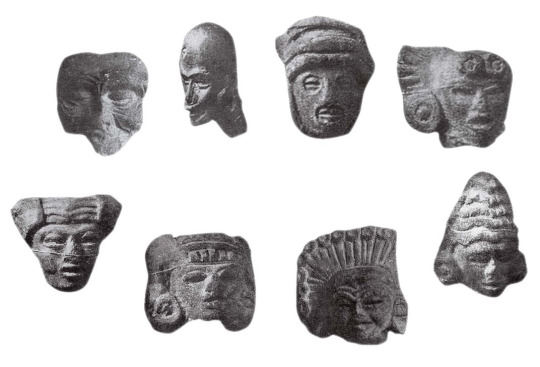
Zelia Nuttall divided her collection of terra-cotta heads into three classes. The first included rudimentary efforts to represent a human face (as seen above, far left). The second class (including the bald second head from the left above) had holes for attaching earrings and other ornaments. The third category included the rest of the heads pictured here, sporting what Zelia called “a confusing variety of peculiar and not ungraceful headdresses.” Public Domain
Zelia generally accepted her era’s assumptions about race and class, and she was comfortable with her elite status and its privileges. Yet in her research, she did not categorize civilizations as primitive, savage or barbaric, as other scholars did, nor did she indulge in racial theories of cultural development. Instead, she sought to sweep aside this kind of speculation and replace it with observation and reason.
The more Zelia examined her terra-cotta heads, the more she realized she needed guidance from someone who had more experience in the study of antiquity than she had. At the time, there were no departments of anthropology in colleges or universities, no degrees to be earned, no clear routes to building a career. To pursue her burgeoning interest in the ancient civilizations of Mexico, and to decipher the meaning of an assortment of terra-cotta heads, she contacted Frederic Ward Putnam, the curator of Harvard’s Peabody Museum of Archaeology & Ethnology and a leading expert on Mesoamerica. He agreed to meet her in the fall of 1885. The meeting was all she hoped for: Putnam warmed to her work and encouraged her to follow her intuitive grasp of how to observe and interpret evidence.
Putnam’s regard for women’s intellectual capacities was clear. He was one of a small number of Harvard researchers who gave lectures at “the Annex,” an institution established for women who had passed the college’s admissions test but were not allowed to attend classes or earn a degree. (The Harvard Annex eventually became Radcliffe College.) He hired a resourceful administrative staff of women and encouraged them to play a role in managing the museum. He also had a “correspondence school,” which he conducted through a widespread exchange of letters. As he once wrote, “Several of my best students are women, who have become widely known by their thorough and important works and publications; and this I consider as high an honor as could be accorded to me.”
Within months of their first encounter, in late 1885, Putnam asked Zelia to become a special assistant in Mexican archaeology for the Peabody. Less than a year later, in the annual report of the Peabody Museum, he wrote about her appointment in glowing terms: “Familiar with the Nahuatl language … and with an exceptional talent for linguistics and archaeology, as well as being thoroughly informed in all the early native and Spanish writings relating to Mexico and its people, Mrs. Nuttall enters the study with a preparation as remarkable as it is exceptional.”
With guidance from Putnam, Zelia wrote an investigation of the terra-cotta heads, her first published scientific report, which appeared in the spring 1886 issue of the American Journal of Archaeology. “At the first glance,” she wrote, “the multitude and variety of these heads are confusing; but after prolonged observation, they seem to naturally distribute themselves into three large and well-defined Classes.”
Each class, she theorized, had been created at a different time and represented a different stage in the culture. The first class contained “primary and crude attempts at the representation of a human face.” The second class included the first efforts at artistry. Her inspection revealed “holes, notches and lines,” suggesting ways in which tiny headdresses, feathers or beads could have been attached to the heads, and noted traces of several colors of paint and different kinds of clay.
The third class was the most important, Zelia argued, because of the quality of the molding and carving. This class had “modifications of feature sufficient to give every specimen an individuality of its own,” she wrote. “The faces are invariably in repose, in some the eyes are closed … faces young and smooth, others very elongated, some with sunken cheeks, others with wrinkles.”
By comparing these terra-cotta heads with ancient pictographs and writings, she showed that some of the heads represented children while others depicted young men, warriors or elders. Others showed the distinct hairstyles described in the writings of Bernardino de Sahagún, a 16th-century Franciscan friar who spent 50 years studying the Aztec culture, language and history. “The noblewomen used to wear their hair hanging to the waist, or to the shoulders only. Others wore it long over the temples and ears only,” Sahagún had written. “Others entwined their hair with black cotton-thread and wore these twists about the head, forming two little horns above the forehead. Others have longer hair and cut its ends equally, as an embellishment, so that, when it is twisted and tied up, it looked as though it were all of the same length; and other women have their whole heads shorn or clipped.”
These concrete observations allowed Zelia to challenge popular ideas about the supposed African, Asian, European or Egyptian origins of the “races” in the Americas. For example, by studying the ornamentation the heads displayed, she was able to identify the person or god each artifact represented and interpret its ritual or symbolic purpose. One clearly corresponded with Tlaloc, the pan-Mesoamerican god of rain, who had been shown in the pictographs with a curved band above the mouth and circles around the eyes. Another head, molded with a turban-like cap, corresponded with the goddess Centeotl; Zelia speculated that the clay turbans once had real feathers attached. She also noted the significance of various poses. “In the picture-writings, closed eyes invariably convey the idea of death,” she wrote.
The article revealed how Zelia intended to be seen as a scholar. First, she made it clear that she had read what others had written. Then she revealed that she would go beyond existing speculation to answer questions that had puzzled others; hers was to be original and important work.
In 1892, Zelia presented a paper in Spain about the Aztec calendar stone. Buried during the destruction of the Aztec Empire, the calendar stone had been unearthed in December 1790, when repairs were being made to the Zócalo, Mexico City’s central plaza. The sculpted stone, some 12 feet in diameter and weighing 25 tons, became a popular attraction exhibited in the Mexico City Cathedral, steps from where it had been found. Antonio de León y Gama, a Mexican astronomer, mathematician and archaeologist, had written about its discovery and praised the intelligence of the Aztecs who had created it. Alexander von Humboldt, who saw the stone when he visited Mexico in 1803-1804, included a drawing in his Views of the Cordilleras and Monuments of the Indigenous Peoples of the Americas, published in 1810, and encouraged Mexican intellectuals to study the meaning of its concentric circles and numerous glyphs. Many others took on its puzzles in the years that followed.
At the time of Zelia’s presentation, the Mexican upper classes were carefully crafting a new national image—a story that would allow Mexico to take its place among the modern nations of the world. The Aztecs, Maya, Olmecs, Toltecs, Zapotecs and other cultures had left their imprints throughout the country in magnificent temples, enigmatic statues, gold jewelry, jade figurines and painted murals. This history was reclaimed as a national heritage every bit as glorious as those of Greece and Rome. A statue of Cuauhtémoc, the Aztec king who resisted Cortés, took its place on Mexico City’s elegant Paseo de la Reforma in 1887. The calendar stone had been installed in a place of honor in the National Museum in 1885. But little was known about the actual customs and beliefs of those ancient people.

The Aztec calendar stone, a central focus of Zelia’s research, has been on display at Mexico City’s National Museum of Anthropology since 1885. Alamy
With her extraordinary knowledge of surviving codices, Zelia offered a novel “reading” of the giant calendar stone that had stumped others and provided new insights into the annual and seasonal cycles of daily life in ancient Mexico, illuminating the cosmology, agriculture and trade patterns of the Aztecs. She presented another version of the paper at the World’s Columbian Exposition in Chicago in 1893.
Zelia returned to Mexico City in February 1902, and after a personal audience with Mexican President José de la Cruz Porfirio Díaz, arranged by the U.S. ambassador, she embarked on a spree of travel to archaeological sites she had long wanted to visit. In May, she and 20-year-old Nadine joined friends at the Oaxacan ruins at Mitla, a religious center, where the “place of the dead” harbored both Mixtec and Zapotec art and architecture. On this dry, high plain ringed by mountains, Zelia strolled across vast stone patios, inspected the elaborate geometric friezes that lined and decorated them, explored temples and imagined a sophisticated society of kings, priests, nobles, artisans and farmers.
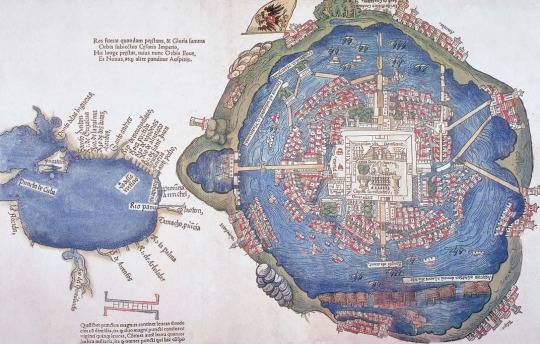
When the Spaniards arrived in Mexico in the 16th century, the Aztec Empire dominated the area. This map of its largest city, Tenochtitlan (now the historic center of Mexico City), was printed in 1524 in Nuremberg, Germany, likely based on a drawing by one of Hernán Cortés’ men. It shows the city’s elaborate network of roads, bridges and canals, complete with aqueducts and bathhouses. The Spaniards executed the last Aztec ruler, Moctezuma II Xocoyotzin, and forced his people to convert to Catholicism. Alamy
Zelia was welcomed into the international community of anthropologists in Mexico. She and Nadine traveled in the Yucatán with the young American anthropologist Alfred Tozzer, where they were beset by frequent rain and terrible roads. Arriving tired and wet in a small town, Tozzer, who would one day chair Harvard’s department of anthropology, was impressed by the women’s resilience. “Imagine the picture,” he wrote to his family on April 8, 1902. “Mrs. Nuttall, never accustomed to roughing it, a woman entertained by the crowned heads of Europe, sitting at a bench with the top part of my pajamas on drinking chocolate and her daughter with a flannel shirt of mine on doing the same.”
After a few months, Zelia and her daughter returned to Mexico City and purchased a mansion they called Casa Alvarado, in the upscale suburb of Coyoacán. The grand house never failed to impress. Frederick Starr, an anthropologist from the University of Chicago, was one of many who found the palace beautiful and restful: “We rode out to Coyoacán where we found Mrs. Nuttall and her daughter really charmingly situated. The color decoration is simple and strong. Nasturtiums are handsomely used in the patio and balcony effects. … While Mrs. Nuttall dressed, Miss Nuttall showed us through the garden, where a real transformation has been effected.”
Living in Mexico energized Zelia. In addition to her affiliation with Harvard, she had funding to travel and collect artifacts for the Department of Anthropology at the University of California. “With me here, in touch with the government and people, I think that American institutions can but profit and that I can do some good in advancing Science in this country,” she confided to Putnam.
Impressed by her knowledge of the country’s past, public officials and foreign visitors came to see her and listened carefully as she led them around her home and garden, explaining the collection she was busy assembling. Her garden, patio and verandas were home to an increasingly large number of stone artifacts, a beautiful carving of the serpent god Quetzalcóatl, revered for his wisdom, among them. She took up “digging” near Casa Alvarado, an activity one guest later recalled fondly. “Every morning after breakfast Mrs. Nuttall would give me a trowel and a bucket. She herself was equipped with a sort of short-handled spade, and we would go out into the surrounding country and ‘dig.’ We mostly found broken pieces of pottery, but she seemed to think some of them were significant, if not valuable. … She was a very handsome woman and very charming. She lived in great style, with many Mexican servants.”
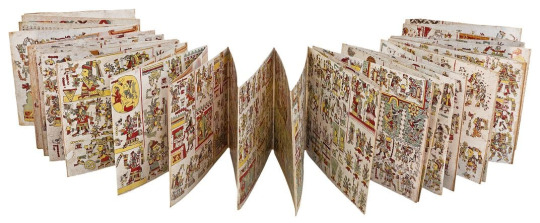
The Codex Borgia, an accordion-folded document of Aztec life, was brought to Europe during the Spanish colonial period. Made of animal skins and stretching 36 feet when unfolded, the codex catalogs different units of time and the deities associated with them. It also includes astrological predictions once used for arranging marriages. Zelia drew on the codex to help her decode the Aztec calendar. Courtesy Ziereis Facsimiles

A section from the Codex Borgia
Zelia continued to travel throughout the country. She found a 14-page codex painted on deerskin, with commentary in Nahuatl, that she believed so valuable that she bought it with her own money, selling some of her possessions to afford it. “Owing to my residence here I must keep it a profound secret that I possess and sent out of the country this Codex,” she wrote to Putnam.
While she was not above smuggling treasures out of Mexico, Zelia also worked in the National Museum, contributing to its displays and archives, and she became an honorary professor of the institution.

Zelia had never owned a home until she bought Casa Alvarado in 1902. In a letter, she described the property as “a beautiful old place with extensive gardens.” Smithsonian Archives
Her Sunday teas at Casa Alvarado were a study in salon orchestration. “She would have 30 or 40 people and she would change the groups she invited,” one visitor recalled. “Sometimes they were all people who knew each other. Or else she would bring people together she wanted to introduce to each other. They weren’t like old-style Mexican parties, with all the women on one side and men on the other. The men and women were mixed together.”
According to an oft-repeated legend, at one of her soirées, she advanced to welcome an eminent guest just as her voluminous Victorian drawers came loose and dropped to her ankles. She calmly stepped out of them and proceeded as if nothing had happened. Zelia was, above all, self-confident.
Zelia Nuttall left Mexico during the early months of 1910 and did not return to her beloved Casa Alvarado for seven years. Throughout that time, Mexico was in the midst of a violent revolution. As many as two million people lost their lives in the ten-year conflict, and the country’s infrastructure was reduced to tatters. Even after the end of the most extensive violence, turmoil erupted sporadically until the late 1920s.
By then, visitors to Casa Alvarado agreed that Zelia was rooted in a bygone era. She was a middle-aged woman with thick glasses who favored shawls, laces and jet beads. Her palace was still filled with stuff only a Victorian could accumulate, but Mexico was telling new stories about itself.
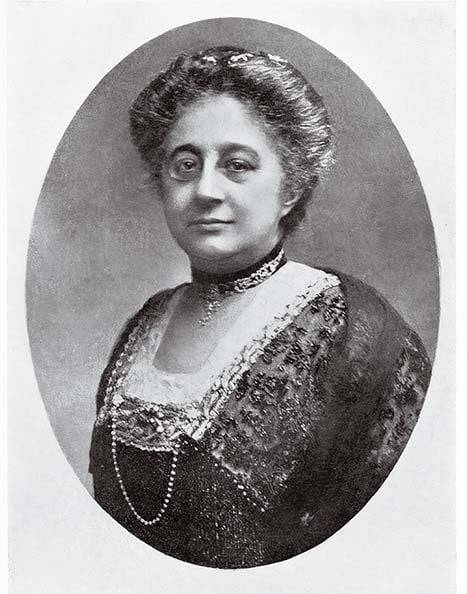
The writer D.H. Lawrence used Zelia as a model for a fictional character—“an elderly woman, rather like a Conquistador herself in her black silk dress and her little black shoulder-shawl.” Antropo Wiki
The elites of the previous generation had asserted that descendants of the Aztec, Maya and other civilizations deteriorated into poverty and abandon. Young artists and intellectuals now rejected this belief. In Diego Rivera’s vast public murals, he showed the people of Mexico being ground into poverty and submission by Spanish conquistadors, a rapacious church, foreign capitalism, the army and cruel politicians. Quetzalcóatl replaced Santa Claus at the National Stadium; Chapultepec Park hosted Mexico Night.
Zelia did not like the revolution and she did not approve of what came after it. She did not celebrate the masses; she believed in hierarchy and a natural order of classes and races. Yet she was determined to be relevant to a new era in Mexico. Casa Alvarado became a meeting place for politicians, journalists, writers and social scientists from Mexico and abroad, many of whom came to witness the possibilities of change in the aftermath of a people’s revolution.
Nevertheless, the stubborn elegance of Casa Alvarado in the 1920s was clear testimony that Zelia was not willing to give up her lifestyle. When the French American painter Jean Charlot was a guest at one of Zelia’s teas, he was aghast at the Mexican servants in white gloves.
When Zelia Nuttall died in 1933, the U.S. consul in Mexico City wrote to Nadine—by then a 51-year-old widow living in Cambridge, England—assuring her that they’d given her mother a tasteful funeral. “Your Mother was very highly thought of here, as evidenced by the floral offerings and the number of her friends who came to the funeral service at the cemetery, it being estimated that about one hundred persons were present.”
By that time, the field of anthropology was dramatically changing, becoming more systematic and organized. Those who entered the field in the 1920s and 1930s built expertise in the classroom and under supervision in the field, passing a variety of tests and milestones determined by academic experts and acquiring a credential as proof of the right to pursue these inquiries. With these rigorous new standards, they asserted their superiority as scholars over those of Zelia’s generation.
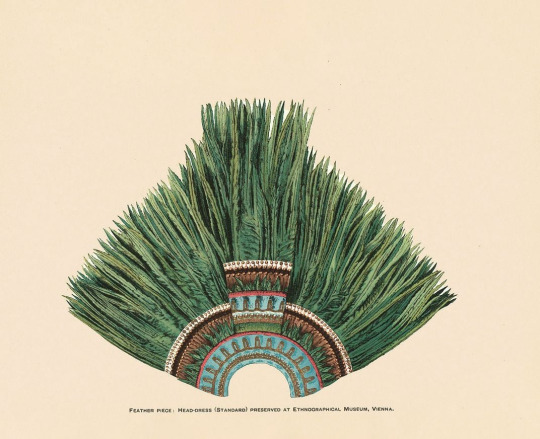
Researchers thought this item at Vienna’s Museum of Ethnology was a “Moorish hat” before Zelia identified it as a Mesoamerican headdress. Alamy
Yet Alfred Tozzer, in his memorial in the journal American Anthropologist, reflected that Zelia “was a remarkable example of 19th-century versatility.” She was wrong in some of her overarching theories. For instance, she fallaciously argued that ancient Phoenician travelers had carried their culture to Mesoamerica. But she was right about many other things. Through her letters, articles and books, we can trace what she got right and what she got wrong as a scholar, and we can follow her as she moved from one research obsession to the next.
Her private life is harder to grasp. Among all the artifacts, there is little about the quips and gossip she exchanged with friends, the piano music she liked to play and sing. We cannot know what was in the boxes of papers in the cellar of Casa Alvarado that were burned in the housecleaning undertaken by its new tenants. We cannot retrieve personal and public documents lost in the San Francisco earthquake in 1906.
What we do know is that she had to make sacrifices, often very personal ones. We can feel her vulnerability, uncertainty, anger and embarrassment in the letters she wrote, as well as her self-assuredness. It required unusual self-discipline to learn so many languages and to gain a mastery of ancient pictographs. Her almost constant travels imperiled her health even while they advanced her vast network of friends, colleagues and patrons. But she continued to work, and that work helped establish the foundation on which many others now build.
A single mother pursuing a career while looking after a family in a man’s world: In some ways, Zelia Nuttall was a very modern woman.
Adapted from In the Shadow of Quetzalcoatl: Zelia Nuttall and the Search for Mexico’s Ancient Civilizations by Merilee Grindle, published by The Belknap Press of Harvard University Press. Copyright © 2023 by Merilee Grindle. Used by permission. All rights reserved.
#Women in history#Women in Anthropology#Zelia Nuttall#The Aztecs#Merilee Grindle#In the Shadow of Quetzalcoatl: Zelia Nuttall and the Search for Mexico's Ancient Civilizations#Books by women#Books about women#teotihuacan#mesoamerica#Nahuatl#Published women#Many of the first anthropologists were women#Alphonse Pinart was just another man who blew through his money#Women's careers flourishing after dumping a parasitic man#Frederic Ward Putnam#Men who encouraged women#The Annex#Lady scientist
45 notes
·
View notes
Text
FAQ
Q: Who are you?
A: I'm Mayfield Yucca, a Pokémon trainer and amateur folklorist.
Q: What region are you from?
A: I'm from Unova, Nacrene City specifically, but I'm Paldean on my dad's side. Yes, I'm that white boy in the family photo.
Q: Did you really win those conferences?
A: I sure hope I did, otherwise I owe a lot of people their prize money.
Q: What kind of folklore do you study?
A: I study folklore unrelated to Pokémon typically described as Legendary or Mythical.
Q: What kind of Pokémon do you train?
A: I train a variety of Pokémon, but not all of them battle. A lot of them do, but battling isn't for every Pokémon, and I understand that. Mac, my Slurpuff, just kind of lives with me and my partner.
Q: If you're such a high-ranked trainer, is your partner someone high-ranked too?
A: They are, but I'm not going to tell anyone on this hellsite. They have enough on their plate already.
Q: Which one of your Pokemon is your favorite?
A: None of them, I love them all dearly.
Q: Can we challenge you to a battle if we meet?
A: Sure, so long as you don't mind 5 on 5. My starter isn't exactly great around people...
Current Pokemon
Aero (Aerodactyl)
My starter! He's had a bad experience with humans, so I'm really the only one he's comfortable around. I don't tend to let him out in populated areas, only really in remote places to stretch his wings , mealtimes, and battles with dedicated lines-Pokémon in case he lashes out. He's a good boy, he's just scared of people.
Drippy (Cubchoo)
The...third ever Pokémon I caught? He's just a sleepy little dude who rides on my backpack or on my head most of the time. I've had him for over a decade so by all rights he should be a Beartic, but I guess he just likes being small enough to be a hat.
Pory (Porygon-Z)
My beloved malignant hunk of junkdata and the reason my phone bill is so damn high. They live in my phone most of the time, and are actively preventing me from typing anything too derogatory about them.
Rogue (Grovyle)
I just spent a year and a half in Hoenn doing research on their local legends, and all I got for it was this criminal damn Grovyle. I swear he's secretly a Dark-type, but all Grovyle can learn Fling so he's likely just a crook by nature. He hit me in the stomach with an Iron Ball when I tried to catch him originally.
Knuckle the Shooting Star (Cyclizar)
Fun fact, Knuckle was the first Pokémon I caught after I started dating my partner! He's got a scar that runs behind his right eye like a comet's tail from a nasty Dragon Claw he jumped in front of, but I think he likes having it, makes him look like a tough guy. He's kind of a mutant for his species? They don't normally learn Extremespeed, after all.
Barrel (Alolan Muk)
I met Barrel while I was in Alola, about my second year there. Some jerk had locked in her in an oil drum, and it took me and another guy and his Golisopod a few good whacks to get the top off and let her out. She's a good girl, and loves looking out for smaller Pokémon.
6 notes
·
View notes
Text
Wikipedia Featured Article Poll, Biographies Edition. Summaries and links below the cut
Margaret Ives Abbott (June 15, 1878 – June 10, 1955) was an American amateur golfer. She was the first American woman to win an Olympic event: the women's golf tournament at the 1900 Summer Olympics.
Lilias Eveline Armstrong (29 September 1882 – 9 December 1937) was an English phonetician. She worked at University College London, where she attained the rank of reader. Armstrong is most known for her work on English intonation as well as the phonetics and tone of Somali and Kikuyu. Her book on English intonation, written with Ida C. Ward, was in print for 50 years. Armstrong also provided some of the first detailed descriptions of tone in Somali and Kikuyu.
Morris Berg (March 2, 1902 – May 29, 1972) was an American catcher and coach in Major League Baseball, who later served as a spy for the Office of Strategic Services during World War II. Although he played 15 seasons in the major leagues, almost entirely for four American League teams, Berg was never more than an average player and was better known for being "the brainiest guy in baseball." Casey Stengel once described Berg as "the strangest man ever to play baseball".
Edward Dando (c. 1803 – 28 August 1832) was a thief who came to public notice in Britain because of his unusual habit of overeating at food stalls and inns, and then revealing that he had no money to pay. Although the fare he consumed was varied, he was particularly fond of oysters, having once eaten 25 dozen of them with a loaf and a half of bread with butter.
Harold Francis Davidson (14 July 1875 – 30 July 1937), generally known as the Rector of Stiffkey, was a Church of England priest who in 1932, after a public scandal, was convicted of immorality by a church court and defrocked. Davidson strongly protested his innocence and to raise funds for his reinstatement campaign he exhibited himself in a barrel on the Blackpool seafront. He performed in other sideshows of a similar nature, and died after being attacked by a lion in whose cage he was appearing in a seaside spectacular.
Marjory Stoneman Douglas (April 7, 1890 – May 14, 1998) was an American journalist, author, women's suffrage advocate, and conservationist known for her staunch defense of the Everglades against efforts to drain it and reclaim land for development. Moving to Miami as a young woman to work for The Miami Herald, she became a freelance writer, producing over one hundred short stories that were published in popular magazines. Her most influential work was the book The Everglades: River of Grass (1947), which redefined the popular conception of the Everglades as a treasured river instead of a worthless swamp. Its impact has been compared to that of Rachel Carson's influential book Silent Spring (1962). Her books, stories, and journalism career brought her influence in Miami, enabling her to advance her causes.
George Went Hensley (May 2, 1881 – July 25, 1955) was an American Pentecostal minister best known for popularizing the practice of snake handling. A native of rural Appalachia, Hensley experienced a religious conversion around 1910: on the basis of his interpretation of scripture, he came to believe that the New Testament commanded all Christians to handle venomous snakes.
Margaret Alice Murray FSA Scot FRAI (13 July 1863 – 13 November 1963) was a British-Indian Egyptologist, archaeologist, anthropologist, historian, and folklorist who was born in India. The first woman to be appointed as a lecturer in archaeology in the United Kingdom, she worked at University College London (UCL) from 1898 to 1935. She served as president of the Folklore Society from 1953 to 1955, and published widely over the course of her career.
Dom Pedro Afonso (19 July 1848 – 10 January 1850) was the Prince Imperial and heir apparent to the throne of the Empire of Brazil. Born at the Palace of São Cristóvão in Rio de Janeiro, he was the second son and youngest child of Emperor Dom Pedro II and Dona Teresa Cristina of the Two Sicilies, and thus a member of the Brazilian branch of the House of Braganza. Pedro Afonso was seen as vital to the future viability of the monarchy, which had been put in jeopardy by the death of his older brother Dom Afonso almost three years earlier.
Elias Abraham Rosenberg (Hebrew: אליאס אברהם רוזנברג; Hawaiian: Eliaka Apelahama Loselabeka; c. 1810 – July 10, 1887) was a Jewish immigrant to the United States who, despite a questionable past, became a trusted friend and adviser of King Kalākaua of Hawaii. Regarded as eccentric, he lived in San Francisco in the 1880s and worked as a peddler selling illegal lottery tickets. In 1886, he traveled to Hawaii and performed as a fortune-teller. He came to Kalākaua's attention, and endeared himself to the king with favorable predictions about the future of Hawaii. Rosenberg received royal appointments to several positions: kahuna-kilokilo (royal soothsayer), customs appraiser, and guard. He was given lavish gifts by the king, but was mistrusted by other royal advisers and satirized in the Hawaiian press.
#i expanded the summaries from the first sentence of the article to the first paragraph#cause with some of these people you don't get the full effect from just the first sentence#and also cause it's my poll.#Wikipedia polls
22 notes
·
View notes
Note
When it comes to fakethology, I'll admit I'm partial to "everything Robert Graves pulled out of his ass," particularly the figures related to prehistoric Europe supposedly being some kind of feminist utopia like Eurynome, who was totally the original head of the Greek pantheon you guys before those mean old macho-man Zeus worshippers beat her up. Just for the sheer arrogance of it; IIRC he ranted about how he's the only person with enough "poetic vision" to have figured out the "original mythology" or whatever.
Every new piece of information regarding Graves' lunatic inventions I receive against my will. They seem to capture the worst excesses of that era of amateur folkloristics and neopagan thought. It's a shame, because I, Claudius and Claudius the God are rightfully regarded as works of real immensity in their genre, and I think he would have been better served without breaking from that space.
15 notes
·
View notes
Text

What Is a Blue Moon?
There are two different definitions for a Blue Moon. A seasonal Blue Moon is the third Full Moon of an astronomical season that has four Full Moons. A monthly Blue Moon is the second Full Moon in a calendar month with two Full Moons.
When Is the Next Blue Moon?
The next seasonal Blue Moon takes place on August 19, 2024.
The next monthly Blue Moon is on May 31, 2026.
The dates may vary depending on your time zone.
Why Is It Called a Blue Moon?
The historical origins of the term and its two definitions are shrouded in a bit of mystery and, by many accounts, an interpretation error.
Some believe that the term “blue moon” meaning something rare may have originated from when smoke and ashes after a volcanic eruption turned the Moon blue. Others trace the term's origin to over 400 years ago—folklorist Philip Hiscock has suggested that invoking the Blue Moon once meant that something was absurd and would never happen.
Origins of the Seasonal Full Moon
The definition of a seasonal Blue Moon, the third Full Moon in an astronomical season with four Full Moons, can be traced back to the now-defunct Maine Farmer's Almanac. According to the Almanac, the appearance of a 13th Full Moon in a year ‘upset the arrangement of Church festivals.’ The unlucky status of the number 13 and the difficulties of calculating the occurrence of such a Full Moon led to the extra Full Moon being named a Blue Moon.
We can thank the Christian ecclesiastical calendar for the reason why the third Full Moon of the season is called the Blue Moon. The calendar uses the phases of the Moon to determine the exact dates for holidays like Lent and Easter.
The month of Lent contains the final Full Moon of winter, Lenten Moon. The first Full Moon of spring—also known as the Easter Moon or the Paschal Moon—falls just before Easter. Naming the third Moon of the season as the Blue Moon ensured that Lent and Easter coincided with the right Moon phases, and other celebrations and customs would still fall during their “proper” times.
Origins of the Monthly Blue Moon
The more popular definition of the Blue Moon, that of the second Full Moon in a month, owes its existence to a misinterpretation originally made by amateur astronomer James Hugh Pruett (1886–1955) in a 1946 edition of Sky & Telescope magazine. The error took on a life of its own and spread around as fact. It even found its way into the answers of the 1986 version of the board game Trivial Pursuit! Today, this definition is considered a second definition of the Blue Moon rather than a mistake.
At timeanddate.com, you will find the dates and times of both seasonal and monthly Blue Moons in your time zone.
Sleep, crime, and menstruation: how Full Moons affect humans
How Rare Is a Blue Moon?
For a monthly Blue Moon to take place, a Full Moon must occur at the beginning of the month. This is because the time between two successive Full Moons is approximately 29.5 days, just short of most months in the Gregorian Calendar.
Seasonal Blue Moons take place slightly less frequently than monthly Blue Moons—in the 1100 years between 1550 and 2650, there are 408 seasonal Blue Moons and 456 monthly Blue Moons. This means that either type of Blue Moon occurs roughly every two or three years.
Blue Moons that are blue are incredibly rare and have nothing to do with the calendar or the Moon's phases but are instead a result of atmospheric conditions. Volcanic ashes and smoke, water droplets in the air, or certain types of clouds can all contribute to a Full Moon taking on a blue shade on rare occasions.
The Moon can sometimes look red
Double Blue Moon
Because of this, February, which has 28 days in a Common Year and 29 days in a Leap Year, can never have a monthly Blue Moon. Some years, February has no Full Moon at all, which is called a Black Moon. A February with no Full Moon happens when January and March have a Blue Moon each.
Known as a Double Blue Moon, this phenomenon is rather uncommon and takes place only about three to five times in a century. We saw a Double Blue Moon in 2018 in most time zones and will see it again 19 years later, in 2037, in many time zones.
Astronomical terms & definitions
Seasonal and Monthly Blue Moons Together
Seasonal and monthly Blue Moons can also sometimes occur in the same year. Between 1550 and 2650, 20 years have one seasonal and one monthly Blue Moon in many time zones. The last time this happened was in 1934 and the next time will be in 2048.
In the same period, 21 years have Triple Blue Moons—one seasonal and two monthly Blue Moons in the same calendar year. The next is in 2143, while the last time was in 1961.
Two seasonal Blue Moons in a year is an impossibility, as that would require 14 Full Moons in the same year.
2 notes
·
View notes
Text
Blog Bible
About:
I’m @yurious-george, amateur ballerina, ex-operatic soprano, and folklorist. I’ve been a fan of Princess Tutu since the mid 2010s, and found it endlessly fascinating in its breadth of knowledge. Here, I intend provide resources to further research, official materials, and preserve fandom history, for the edification of new fans and preservation of information.
This blog is primarily research-focused, but I will occasionally post my own analysis. Queue is running on one post per day, if I fill it.
Essays on the back burner:
Clothing symbolism in Princess Tutu (& how it pertains to Mytho specifically, aka why he’s not wearing pants)
Drosselmeyer, the Tales of Hoffmann, and the Sandman: Hoffman and a history of the Drosselmeyer character across media
Two Sigfrieds and a Swan King: Wagner’s operas and King Ludwig II of Bavaria
The Nutcracker & Swan Lake: how the two Tchaikovsky ballets influence the role of every major character in Princess Tutu
A role that doesn’t fit: how rue is forced into the role of seductress, and the deconstruction of the whore/Madonna complex
Beginner's guide to ballet: a dictionary of ballet steps, positions, and mime
Asks help me focus my ideas, so if you’d like to read any one of them, shoot me a message.
Tag List:
a: ____ - artist
b: ____ - ballet
ch: ___ - character
o: ____ - opera
m: ___ - music
f: ____ - fairytale/folklore
l: ____ - location
ep: 0x0 - episode, by season and number
e: ____ - event (usually anniversaries)
misc: _ - miscellaneous
misc tags:
fandom - fandom-specific history
meta - analysis focused on other works and how they intersect with princess tutu
Analysis - analysis of princess tutu without using external media as reference,
official material
development notes
costuming
discussion
reference - masterlists & style guides
Affiliates:
@princesstutumeta: more focused on collecting tumblr posts discussing Princess Tutu rather than research, but a great resource.
3 notes
·
View notes
Text
2 notes
·
View notes
Text
If you remember where you first heard about the rabbit in the moon, please put it in the replies/tags!
16 notes
·
View notes
Text
It’s also, ironically, Algonquians appropriating a taboo from the other side of the continent, because the Native American supernatural being you don’t talk about is skinwalkers. Which are a thing in Navajo culture (though originally in Hopi culture but nobody knows what a powaka is, they only know yee naaldlooshii). I’ve never seen any mention of not saying “wendigo” till this last decade, and not even most of that. And I’m an amateur folklorist with a background in New World anthropology.
And the taboo on mentioning skinwalkers is because they’re shapeshifting witches (not cryptids, mythic creatures, or even ghosts, just human diabolists) who might overhear you (“Why is that coyote over there acting weird?”)—some accounts say they can hear you talk about them from anywhere, after dark—and kill you for knowing too much. “You can’t talk about the Mafia, it’s offensive to Italian culture!” no dude the issue is the Mafia kills people who might rat, which was historically an issue in Italian neighborhoods. If you’re reasonably sure there are no mafiosi around you can talk all you like.
I just got an ask about a Native spirit that many Natives have asked monsterfuckers to not use.
It starts with a W.
People from the culture it’s from do not say its name because in their culture, saying the name summons the spirit. Out of respect for my friends from that culture, I do not say/type the name either.
I would kindly ask you not put that creature in my ask box in the future. I know the person that submitted it likely didn’t know so there’s no hard feelings. It’s alright. I’m not upset.
I’m not really the best person to educate folks on this topic and I wish I had some resources on why that’s not a good thing for non-Native people to use for their fiction.
I’m sure even my wording here isn’t great. I know the spirit is from a specific Native culture (there’s a lot of them, for those that didn’t know lol) and I can’t remember which one(s) and my brain is still fuzzy from being sick.
So if any of my followers are familiar with this issue, please feel free to share the info of why this isn’t good.
Again, I understand the person that sent the ask likely didn’t know all this. I’m not upset. I just think it’s worth mentioning.
42K notes
·
View notes